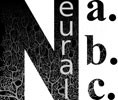Quantifying Connectional Architecture
The cerebellum
Historically seen as a motor control structure, recent evidence has pointed towards a role for the cerebellum in a wide range of cognitive and emotional processes. While we know now that the cerebellum is involved in these higher order processes, we still lack a fundamental understanding of its anatomical connectivity in humans.
Understanding how white matter connections between the cerebellum and cortex are organized is fundamental to understanding the diverse functions of this brain structure. Unlike the cortex, the anatomy within the cerebellum is highly uniform, meaning that its various functions are primarily determined by its connectivity. The cortex projects to the cerebellum, via the pontine nuclei, through the middle cerebellar peduncle (MCP). We used diffusion MRI to map the connectivity between the pons and the different lobules of the cerebellum. We then generated parcellations of the MCP and pons based on their cerebellar connectivity.
Multimodal structural covariance
Using multimodal and quantitative MRI metrics, we seek to characterize the relationship between metrics and identify the pattern of structural covariance across the brain. Through statistical analyses, we describe the relationships between metrics and are investigating the links to underlying anatomy and physiology.


